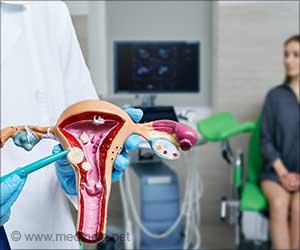Minimally Invasive Approach Eases Uterine Fibroid Symptoms

“While a hysterectomy resolves issues caused by fibroids, it is major surgery that comes with risks,” said Mina Makary, MD, an interventional radiologist at Ohio State Wexner Medical Center and clinical assistant professor of radiology at Ohio State College of Medicine.
During uterine artery embolization, tiny particles about the size of a grain of sand are injected into blood vessels leading to the uterus. The particles cut off blood flow, causing the fibroids to shrink and symptoms to subside. Not only does this allow women to avoid major surgery, but the procedure is also a great option for women who want to preserve their uterus or want to have children in the future. It is one of several solutions offered through Ohio State’s new Multidisciplinary Uterine Fibroid Clinic, which is focused on personalizing treatments based on what is important to each patient.
“Through the Uterine Fibroid Clinic, we bring together gynecologists, interventional radiologists and a variety of researchers to look at fibroids comprehensively from different patient perspectives,” said Amber Bondurant, MD, the clinic’s co-director and a physician and clinical assistant professor in obstetrics and gynecology at Ohio State Wexner Medical Center and College of Medicine.
Advertisement
“Medical therapies like birth control pills and other medications can help ease mild symptoms,” said Makary. “But once patients experience moderate to severe symptoms, they need more attention and more help, whether it’s surgical options or minimally invasive options such as uterine fibroid embolization.”
Experts say patient awareness and education is crucial to helping each woman make the right treatment choices for her. Women are encouraged to ask questions about both surgical and minimally invasive procedures to find the treatment that best meets their needs.
Source: Newswise
Source link
#Minimally #Invasive #Approach #Eases #Uterine #Fibroid #Symptoms



